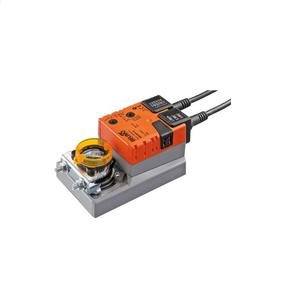In the realm of heating, ventilation, and air conditioning (HVAC) systems, there lies a component that might not claim the limelight but plays a pivotal role in ensuring comfort and energy efficiency. This component is the damper actuator, a device often overlooked yet essential for the precise control of air flow in residential, commercial, and industrial environments.

A damper actuator is a motorized device designed to adjust the position of dampers in HVAC systems. Dampers are plates or valves that can open or close to regulate the flow of air within ductwork. The actuator’s job is to move these dampers to the desired position, based on signals from the system’s control unit. This regulation is crucial for directing air to specific areas, maintaining proper indoor air quality, and ensuring that the environment is neither too hot nor too cold.
The importance of damper actuators cannot be overstated. They are the muscles in the HVAC system, responding to the brain—the control system's commands—to deliver the right amount of air to each zone. Without these actuators, the system would be unable to efficiently distribute air, leading to imbalanced temperatures, increased energy consumption, and reduced occupant comfort.
Modern damper actuators come in various types, including pneumatic, electric, and hydraulic. Each type has its own set of advantages and is selected based on the specific requirements of the HVAC system. Pneumatic actuators use compressed air to move the damper, making them suitable for large commercial systems where air supply is readily available. Electric actuators, on the other hand, use electric motors and are praised for their precision and ease of integration into automated systems. Hydraulic actuators are less common but offer high force output for heavy-duty applications.
The evolution of damper actuators has been marked by technological advancements that aim to improve their efficiency and functionality. Today’s actuators are often equipped with smart features such as position feedback, which allows for more accurate control and diagnostics. Some are also capable of modulating control, adjusting the damper position incrementally to achieve finer temperature and air quality management.
One of the latest trends in damper actuator technology is the integration of Internet of Things (IoT) capabilities. With IoT, actuators can be monitored and controlled remotely, providing facility managers with real-time data on the system’s performance. This connectivity not only enhances the efficiency of HVAC systems but also facilitates predictive maintenance, reducing downtime and extending the lifespan of the equipment.
Despite their critical role, damper actuators must be properly selected, installed, and maintained to perform effectively. Incorrectly sized actuators might fail to exert the necessary force to move the dampers, while poor installation can lead to air leakage and energy losses. Regular maintenance is also essential to ensure that the actuators remain responsive and reliable throughout their service life.
The damper actuator market is expected to grow as the demand for energy-efficient HVAC systems increases. With stricter energy regulations and a growing emphasis on sustainable building practices, the role of damper actuators in energy conservation is becoming more pronounced. Manufacturers are continuously innovating to produce actuators that are not only more efficient but also more compatible with green building standards.
In conclusion, damper actuators may not be the most glamorous part of HVAC systems, but their function is indispensable. As technology progresses, these devices are set to become even more integral to the operation of sophisticated and energy-conscious HVAC systems. With the spotlight on energy efficiency and smart building solutions, damper actuators will undoubtedly continue to be a key focus for industry innovation.